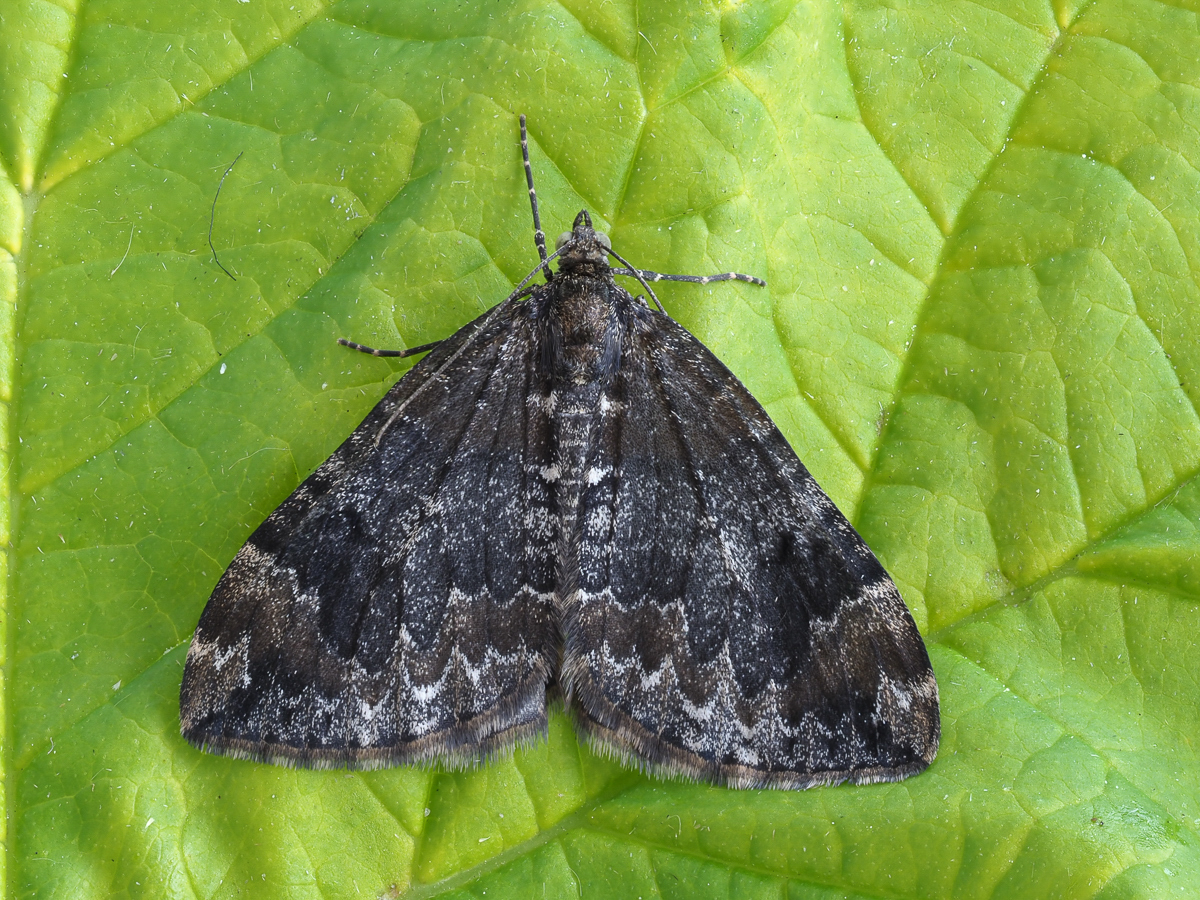
Photo © Andy Mitchell
The common marbled carpet (Dysstroma truncata) is a moth of the family Geometridae. It is sometimes placed in the genus Chloroclysta. It is very common throughout the Palearctic region and the Near East. The species was first described by Johann Siegfried Hufnagel in 1767.
This is one of the most variable of the geometrids both in size (wingspan 32–39 mm) and colour. The basal and terminal areas of the forewings are marked with fascia separated by a large plain area in the middle, but the colouration of all these areas is confusingly variable from white to black with various grey, brown and reddish tones in between. The hindwings, though, are always pale grey marked with faint fascia. Some forms closely resemble Dysstroma citrata.
One or two broods are produced each year and the adults can be seen in any month from May to November. The species flies at night and is attracted to light. It is also attracted to nectar-rich flowers and sugary foods which is fairly unusual for the family.
The larva is slender and green, usually with reddish stripes. It has been recorded feeding on a wide range of plants (see list below). The species overwinters as a larva.
Source: Wikipedia
The primary larval foodplants are Alder (Alnus glutinosa), Bilberry (Vaccinium myrtillus), birches (Betula spp.), Black Currant (Ribes nigrum), Bramble (Rubus fruticosus), docks (Rumex spp.), geraniums (Pelargonium spp.), Goat Willow (Salix caprea), Grey Willow (Salix cinerea), Hawthorn (Crataegus monogyna), Heather (Calluna vulgaris), heathers (Calluna and Erica spp.), Meadowsweet (Filipendula ulmaria), oaks (Quercus spp.), privets (Ligustrum spp.), Raspberry (Rubus idaeus), Red Currant (Ribes rubrum), roses (Rosa spp.), Round-leaved Mint (Mentha suaveolens) and Wild Strawberry (Fragaria vesca).